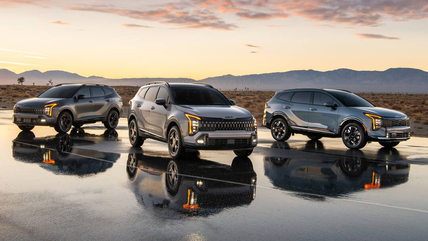Thinking of Buying An EV? Tax Credits and Rebates Can Save You Big Bucks

Who Doesn’t Love a Discount?
Electric (EV) and plug-in hybrid (PHEV) vehicles such as the Chrysler Pacifica or Chevrolet Volt, EV tax credits lead the many benefits when it comes to saving money on fuel and operating costs, but how do these incentives work, and are there others? Rebates, special prices, manufacturer incentives and state tax credits are offered on many cars too, but for many of them you have buy soon.
Hurry; the biggest incentive expires at the end of the month

While the rebates may continue into 2017, tax credits for purchases in 2016 will end on December 31, 2016, so if you are considering buying an EV and qualify for the credit, you should decide on a purchase as soon as possible. The most popular incentive is the $7500 federal tax credit you receive when purchasing a qualified electric vehicle. There are also lower federal tax credits, cash back rebates and financing deals. For instance, the Nissan Leaf offers free charging for two years on a lease price of $199 a month.
How does the EV tax credit work and how to I get it?
The second part of this question is actually very easy to answer: use IRS Form 8936 on your tax return to receive the federal EV tax credit. But the first part of that question, well, it’s a little stickier. The Department of Energy’s website lists which vehicles qualify for this rebate and how much of the credit you qualify for; you can find a list of state credits here. Credits vary by the size of the battery and number of vehicles the manufacturer has sold, which phases out after that number is reached. The IRS breaks it down for you:
The qualified plug-in electric drive motor vehicle credit phases out for a manufacturer’s vehicles over the one-year period beginning with the second calendar quarter after the calendar quarter in which at least 200,000 qualifying vehicles manufactured by that manufacturer have been sold for use in the United States (determined on a cumulative basis for sales after December 31, 2009) (“phase-out period”).
Qualifying vehicles manufactured by that manufacturer are eligible for 50 percent of the credit if acquired in the first two quarters of the phase-out period and 25 percent of the credit if acquired in the third or fourth quarter of the phase-out period. Vehicles manufactured by that manufacturer are not eligible for a credit if acquired after the phase-out period.
What is the tax credit exactly?

Unlike rebate, when you often receive a check in the mail after buying the product, you can only claim your credit for your EV on your federal tax return. Unfortunately you cannot take it off of the price of the vehicle when you purchase it. The credit is on your income taxes which means that if you paid more than $7,500 in federal taxes in any form you get a credit against those in the tax year that you purchased the vehicle.
How to know if you qualify for a tax credit
There are some restrictions that you should know about. Since this is a tax credit, it is credited against ANY federal taxes you pay, including those that are deducted from your paycheck and get reported on your W2. That means you don’t have to owe $7,500 to get the credit, you simply had to pay more than that in taxes over the course of the year. In general, you would need to have an income (or joint income) of over $80,000 to be able to take the full credit, and it can only be used in the tax year in which you purchased the vehicle and cannot be carried over to subsequent years. If you are using a tax program such as Turbo Tax to do your own taxes, make sure you look carefully at how the program treats this credit. However, remember that the program takes into consideration other information and not everyone gets the full credit.
Other things to know about EVs and tax credits
 You MUST take the tax credit in the tax year that you purchase the vehicle; EV tax credits can’t be held or rolled over to next year or any other year. So buying an EV now is when you’ll most quickly feel the benefits. If you buy one in January and qualify for the credit, you can’t claim it until April, 2017.
You MUST take the tax credit in the tax year that you purchase the vehicle; EV tax credits can’t be held or rolled over to next year or any other year. So buying an EV now is when you’ll most quickly feel the benefits. If you buy one in January and qualify for the credit, you can’t claim it until April, 2017.
Tax credits also will only apply to the person who actually purchases the vehicle. So if you decide to lease an EV (which is not a bad thing at all), then YOU don’t get the tax credit, the lender does. Now that might not sound all that great, but in general the leasing companies will pass along that credit to you by lowering the price of the vehicle, resulting in a lower lease payment. Make sure you are aware of this when negotiating a lease on an EV.
Now, ready to go shopping?
Categorized:Car Buying







